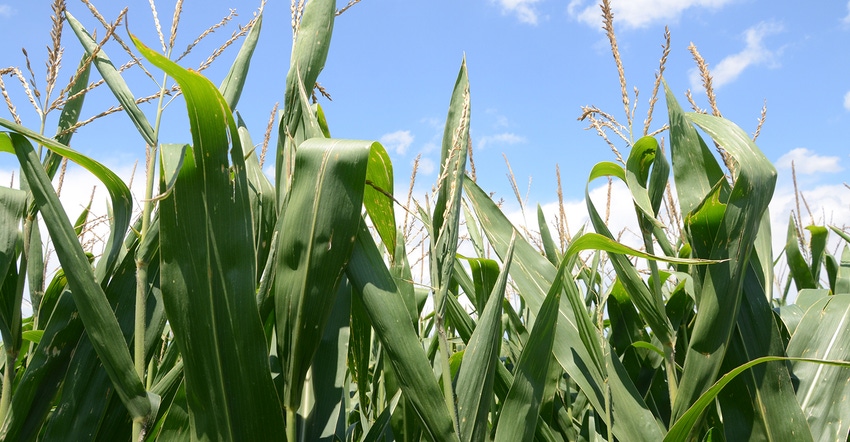June 11, 2019

Startups in agriculture are essentially popping up all over, and no two are alike. Often, they target a specific tech or agronomy area and push toward the specialty crop market, and sometimes the targeted benefits are hard to quantify.
Anuvia Plant Nutrients is going against the grain on all those ideas. The company can turn any biological material into a substrate to create a consistent fertilizer product that offers nitrogen, phosphorus and sulfur when added to a conventional granular fertilizer program. In addition, the company has targeted broad-acre row crops as a business model; for 2019, it will have product applied on about 1 million acres. As for quantifying the benefit? A new study shows that the product not only reduces greenhouse gases, but also increases farm profitability.

LEADING A STARTUP: Amy Yoder, Anuvia CEO, is working with her team to build a startup that’s focused on the row crop market. The company, which will have product on 1 million acres in 2019, is seeking to expand production in 2020 with a new plant.

The Anuvia product — SymTRX — can be “built” using a variety of biological products, from manure to peanut hulls. With that starting point, the company’s process is already turning “nothing” into something. “The nutrients are in a plant-available forms,” says Amy Yoder, Anuvia CEO. “And the nutrients stay in the soil zone, where they’re available to the plant. With traditional nitrogen, you can lose 30% to 50% immediately.”
She explains that the Organic MaTRX of the SymTRX product — it is not an organic fertilizer —has a symbiotic impact on the soil microbes in the soil zone. She says that work has shown an increase in soil microbes where the product is applied.
Independent research
The Anuvia process is new to the fertilizer market, and quantifying benefits of the entire production process was a goal for company management. Environmental Resources Management, a global environmental consulting firm, took an in-depth look at the Anuvia process to evaluate its full economic and environmental benefit. What the firm found in its independent study of the product is that the technology in use can reduce greenhouse gas production by up to 32%, compared to conventional fertilizers, if properly applied.
“It’s important to state that we started with a cradle-to-gate strategy, looking at the production phase of fertilizer that Anuvia is producing,” says Braulio Pikman, ERM technical director and lead author of the study. “We started in 2016 and worked to fill in several gaps of information on the process and its impact.”
The study is an in-depth, life-cycle analysis of the making of the product itself, from material coming in, to the process, right up to material leaving the plant — cradle to gate. The Anuvia process generates heat as it breaks down biological material. This is a process Farm Progress has explored in the past. The carbon footprint for the cradle-to-gate strategy was four to 13 times lower than for traditional inorganic fertilizers.
And the analysis, which started with the manufacturing, expanded to cover the value of using the product in the field — essentially a cradle-to-grave analysis. “We studied the product right into the field until you cultivate corn, cotton or rice,” Pikman says. “We’re using numbers for productivity derived from experience and nitrogen loss from conventional products.” To explore the process, data were gathered in work with several universities and agricultural centers of excellence. Those data were then analyzed following international standards (ISO14067) for environmental impact to determine the results.
What ERM found is that using Anuvia, greenhouse gas emissions can be reduced 10% for corn and 32% for cotton and rice.
“The study from ERM shows scientific verification of the claims we’ve been making,” Anuvia’s Yoder explains. “It’s also a conversation point with food companies that are working to reduce their greenhouse gas emissions, and are looking to initiatives to do that.”
Even in the row crop supply chain, major buyers are evaluating their carbon footprint. Yoder notes that major retailers like Walmart have been looking at ways to reduce the carbon footprint on the farm, and there hasn’t been an easy way to do it. “This study shows that we have that product,” she adds.
The other side of the coin is performance. How does the fertilizer work on the farm? And Yoder notes that SymTRX offers a consistent 5% yield improvement compared to conventional practices in a range of crops, including corn, rice, wheat, canola and cotton. “And the performance is consistent,” Yoder emphasizes. “I’ve worked in the crop protection industry for 25 years, and some of those products were not always consistent. We’re very consistent, and we don’t have to think about performance.”
Just add to fertilizer
Anuvia’s product is not a stand-alone; it is part of a program used in combination with conventional fertilizers. But in that process, the 16-1-0-20S product offers a yield boost — and it is now confirmed to reduce greenhouse gases. With the entire food industry looking at its carbon footprint, whether a farmer believes in climate change or not, this is an opportunity to build on the long stewardship track record farmers have.
“I’ve not met a farmer that didn’t want to be more sustainable,” Yoder says. “They have land they’ve farmed for generations. But we really focus on farmer’s performance to get better yield and better soil health with lower greenhouse gases, and this study shows that.”
You can see a summary of the ERM study at anuviaplantnutrients.com/erm, and you can also learn more about the Anuvia production process at the website.
About the Author(s)
You May Also Like






